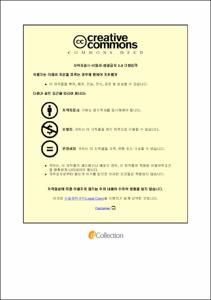2015 개정 교육과정 중학교 1학년 영어 교과서 분석
- Alternative Title
- An Analysis of 2015 Revised National Curriculum
- Abstract
- The purpose of this study was first to examine key features within the content of first year middle school English textbooks based on the 2015 Revised National Curriculum, and thereby to draw several implications with respect to the improvement of the middle school English textbooks for future curriculum revisions.
In order to achieve this purpose, nine middle school first grade English textbooks were randomly selected and analyzed according to the following criteria: The diversity of the activities of four language skills, communicative language function & form of language, linguistic materials & illustrations, and core competencies which were added in the 2015 Revised National Curriculum. The results of the study are as below.
First, according to the analysis results of lesson activities of four language skills, ‘comprehension of received information’ activities account for 86.7%, the highest portion in listening activities. In speaking activities, ‘meaningful practice’ accounts for 26.5%, the highest portion, and ‘inference activity’(2.3%), ‘creative task activity’(1.0%) accounts as relatively low portion. In reading activities, ‘vocabulary learning’(19.2%) was the highest rate in pre-reading activities, but it was excluded in post-reading activities. In the case of writing activities, ‘inductive writing’ was counted as the highest portion of 70.5% and ‘free writing’ accounts for 8.8%, the lowest portion.
Second, among communication function ‘intellectual attitude’(33.4%) was counted as the highest portion followed by ‘friendship activity’(24.3%) and ‘emotional expression’(22.9%). In the case of language form, ‘interrogatives’, ‘be verb & general verb’, ‘to infinitive’, ‘conjunction’, ‘auxiliary verb’, ‘progressive tense’ accounts for relatively high frequency.
Third, according to the analysis results of language material, 'individual and society' occupied the highest frequency with 40.3%, followed by 26.4% of ‘culture’ and 20.8% of ‘community.’ In textbook A, frequency of ‘individual and society’ and ‘culture’ appeared four times respectively, but ‘community’ and ‘literature’ were excluded. In lexical analysis, the average sum of K1 and K2 of the 9 kinds of textbooks was more than 90%. Textbook A(17.3%), C(18.9%), and G(18.2%) had relatively low difficulty of vocabulary learning with a frequency of K2 less than 20%. The K2 frequency of Textbook I accounts for 37.9%, the highest portion. There was a significant differences in difficulty of vocabulary learning in 9 kinds of textbooks. In analysis of illustration, ‘realistic type’ occupied the highest rate of 71.4%. In the case of textbook F, food, historical figures and buildings were frequently used as materials, which showed that the illustrations within ‘expression category’ were closely related to the usage of materials.
Fourth, among four English core competencies ‘self-management competency’ accounts for the highest percentage of 47.5%, followed by ‘English communication capacity’(32.3%), ‘community competency’ (16.6%). By contrast, ‘knowledge information processing capacity’ was utilized at a low frequency of 3.6% of the total competencies.
The results above suggest pedagogical implications, which are as follows. First, more creative task activities in speaking lessons are recommended to be included in textbooks of next curriculum. Second, ‘expressing moral attitude’ communication function is recommended to be included in future curriculum textbooks. Finally, future research of using textbooks in an actual classroom is recommended to investigate the teachers’ and learners’ perception of textbooks.
- Issued Date
- 2019
- Awarded Date
- 2019. 8
- Type
- Dissertation
- Keyword
- 영어교과서분석
- Publisher
- 부경대학교
- Alternative Author(s)
- Jung Ho Na
- Affiliation
- 부경대학교 교육대학원
- Department
- 교육대학원 영어교육전공
- Advisor
- 박매란
- Table Of Contents
- I. 서론 1
1. 연구의 필요성 및 목적 1
2. 연구 과제 2
3. 제한점 3
II. 이론적 배경 4
1. 영어 교재의 의미 4
2. 영어 교재의 장·단점 5
3. 영어 교재의 선정 5
4. 2015 개정 영어과 교육과정의 성격 7
5. 선행 연구 10
III. 연구 방법 13
1. 연구 대상 13
가. 연구 대상 교과서 13
나. 연구 대상 교과서의 구성 체계 14
2. 연구 범위 14
3. 분석 기준 16
가. 언어 기능 16
(1) 듣기 활동 16
(2) 말하기 활동 17
(3) 읽기 활동 18
(4) 쓰기 활동 19
나. 의사소통 기능 및 언어 형식 20
(1) 의사소통 기능 20
(2) 언어 형식 21
다. 언어 재료 및 삽화 22
(1) 소재 22
(2) 어휘 23
(3) 삽화 23
라. 2015 개정 교육과정 영어과 핵심역량 25
IV. 분석 결과 및 논의 27
1. 언어 기능 활동 분석 27
가. 듣기 활동 분석 27
나. 말하기 활동 분석 29
다. 읽기 활동 분석 31
라. 쓰기 활동 분석 33
2. 의사소통 기능 및 언어 형식 분석 35
가. 의사소통 기능 분석 35
나. 언어 형식 분석 37
3. 언어 재료 및 삽화 분석 39
가. 소재 분석 39
나. 어휘 분석 41
(1) 신출 어휘 수 분석 41
(2) 신출 어휘 빈도 분석 42
다. 삽화 분석 44
4. 2015 개정 교육과정 영어과 핵심역량 분석 46
V. 결론 및 제언 49
1. 결론 49
2. 제언 51
참고 문헌 53
부록 57
- Degree
- Master
- Files in This Item:
-
-
Download
 2015 개정 교육과정 중학교 1학년 영어 교과서 분석.pdf
기타 데이터 / 733.77 kB / Adobe PDF
2015 개정 교육과정 중학교 1학년 영어 교과서 분석.pdf
기타 데이터 / 733.77 kB / Adobe PDF
-
Items in Repository are protected by copyright, with all rights reserved, unless otherwise indicated.